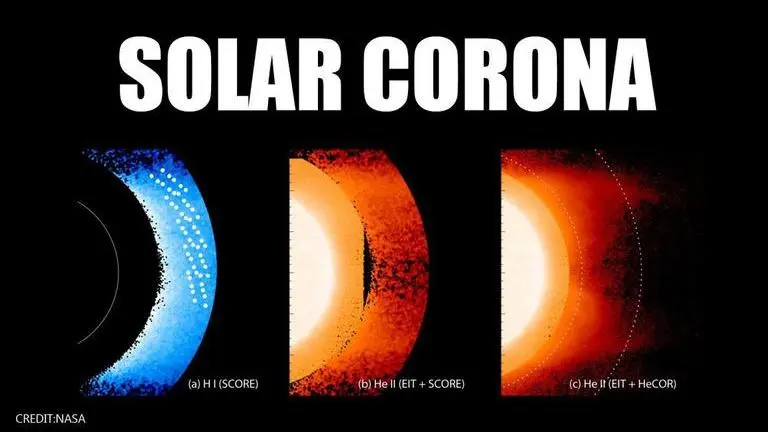Updated 9 August 2020 at 07:51 IST
NASA locates Helium structures in solar atmosphere, gathers full global map
NASA scientists have been studying the solar atmosphere with the help of a sounding rocket since 2009 and have now released a full global map of the same.
- Science News
- 2 min read

NASA scientists have been studying the solar atmosphere with the help of a sounding rocket since 2009 and have now released a full global map of the sun's extended region.
The solar abundance of Helium – the second most abundant element in our universe after Hydrogen – has been hard to measure. According to NASA, knowing the amount of helium in the solar atmosphere can help with understanding the origin and acceleration of the constant stream of charged particles from the sun in the form of solar wind.
As per the study, earlier observation of helium to hydrogen ratio in the solar wind as it reaches the earth showed lower numbers than expected. Scientists suspected the 'missing helium' might be trapped in the solar corona – sun’s outermost atmospheric layer.
NASA’s Helium Resonance Scattering in the Corona and Heliosphere (HERSCHEL) sounding rocket took images of the solar corona to measure the amount of atmospheric helium and hydrogen present in the region.
Advertisement
The images showed that solar corona didn't have an even distribution of helium – while the equatorial region had almost none, the mid-latitudes had abundant. The images, when compared with ESA/NASA’s Solar and Heliospheric Observatory (SOHO) data, showed that Helium abundance at the mid-latitudes overlapped with the solar magnetic field lines opening towards.
Advertisement
Magnetic Field Overlap
The astonishing finding established that the ratio of helium to hydrogen is strongly connected with the magnetic field and the speed of the solar wind in the corona. The study is a remarkable step forward in our understanding of the solar atmosphere which is more dynamic than understood thus far.
The HERSCHEL sounding rocket remotely studies the elemental composition of the solar atmosphere and its observations can be analysed in tandem with the Parker Solar Probe's data on the inner solar system.
The sounding rocket's observations add to the existing body of work seeking to understand the origin and acceleration of solar wind. As per NASA, the researcher plan to note more observations to study the difference Helium abundances with two new instruments onboard ESA/NASA’s Solar Orbiter which can provide more data on solar corona.
Published By : Prerna Vijayeni Panda
Published On: 9 August 2020 at 07:51 IST
